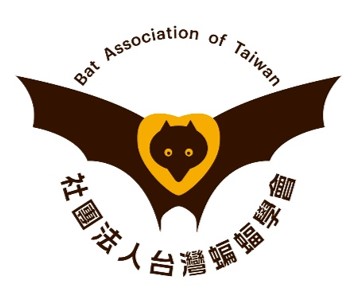蝙蝠研究
2000_南投縣地利地區摺翅蝠體溫調節之研究_黃雲清
出版年份:2000
研究生:黃雲清
分類:碩士論文
題目:南投縣地利地區摺翅蝠體溫調節之研究
Title:Thermoregulation of Miniopterus schreibersii in Dili Area, Nantou County
摘要:
食蟲性蝙蝠利用休眠以節省能量支出,但是休眠的使用受到性別、生殖狀態、年齡、季節、營養狀態、棲息行為的影響,本研究目的即在探討亞熱帶地區摺翅蝠Miniopterus schreibersii體溫調節模式及其影響因子。實驗共包含三部份,採樣地點皆位於南投縣信義鄉地利村一引水涵洞。第一部份為摺翅蝠生殖週期研究,由1998年5月至1999年4月生殖切片資料顯示,雌蝠的生殖週期於9-11月應為交配期,11-2月應為延遲著床期,1-4月底為胚胎著床發育期,5-6月為生產∕哺乳期,6-8月則為哺乳後期。雄蝠於6-11月為生精作用期。第二部份為1999年3月至2000年5月進行野外飛行後體溫及白天實驗室控溫下休息體溫的測量。飛行後體溫受到生殖狀態的影響,且飛行體溫與環境氣溫呈現正相關,而年齡及性別間沒有差異。在實驗室控溫下休息體溫方面,摺翅成蝠幾乎全年皆不休眠,且不同性別及生殖狀態間的休眠比例並沒有差異;在年齡的效應方面,亞成蝠休眠比例較成蝠高;另外寒流來臨及營養狀況不佳時摺翅蝠會進入休眠狀態。第三部份為1999年1月至2000年4月間白天洞穴內群集狀態觀察。結果除了冬天部份月份少數單獨個體呈現休眠狀態,及10月、11月交配期有較多小於10隻的群集且活動遲鈍之外,其他月份的(包含2000年1月23日)摺翅蝠大多形成超過50隻的群集,且這些大型群集中常同時包含雌雄成蝠及亞成蝠,並保持活躍的狀態。因此位於亞熱帶區的摺翅蝠可終年覓食並維持恆溫,只有當前晚覓食狀況不佳或面臨惡劣氣候無法覓食時,這些營養不佳的個體即會進入休眠狀態。另外聚集行為可能有助於摺翅蝠於野外維持高體溫的狀態。
Abstract:
Insectivorous bats can use daily torpor as a means of energy-saving strategies. The purpose of this study was to investigate the thermoregulatory pattern of Miniopterus schreibersii in Dili area from March 1999 to May 2000 and factors affecting their thermal regulation. This study includes three parts. First, the reproductive cycle of M. schreibersii was investigated by histological method. Female''s delayed implantation occurred from November to next February, embryonic development from January to April, parturition and lactation from May to June, post-lactation from June to August, and mating season from September to November. Second, post-flight body temperature (Tb) of freshly captured bats was recorded. The resting Tb was also monitored in laboratory. The post-flight Tb demonstrated positively correlated with ambient temperature, and affected by reproductive conditions, but not founded in sex or age. M. schreibersii entered torpor only during poor foraging condition and cold currents. Most adults tended not to use torpor and maintain high resting Tb throughout the year. There were no significant differences in using torpor between sex and reproductive stage. However, juveniles torpid more frequently than did adults. Third, the activity level and structure of singles and clusters of M. schreibersii were investigated monthly. Most M. schreibersii always roost communally and active consisting of adults and juveniles.
In conclusion, food accessibility and bad weather were more important factors than others in determining the subtropical population of M. schreibersii's entering torpor. And clustering behavior might help M. schreibersii to maintain high body temperature in field.
